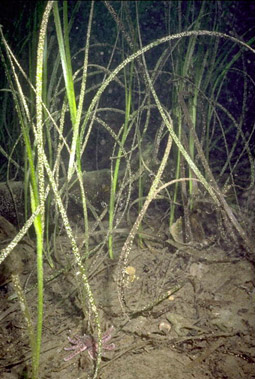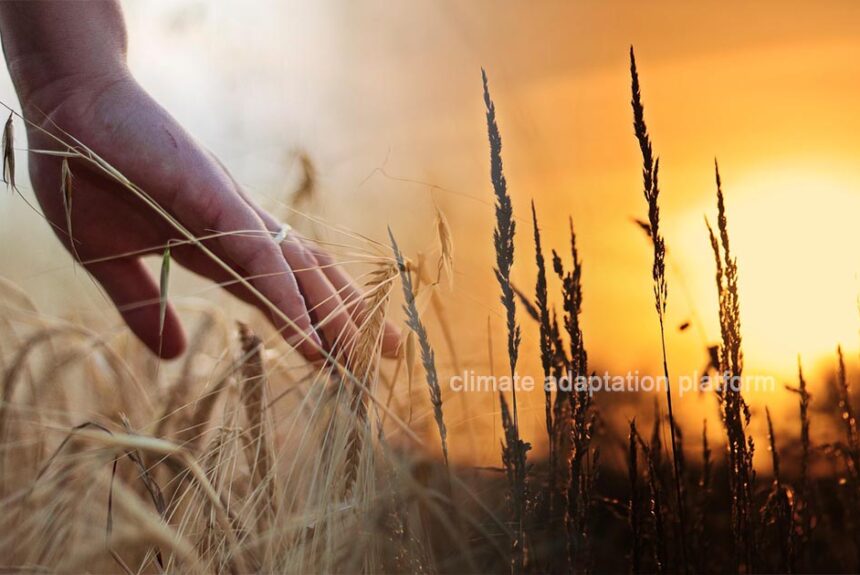Water shortages, droughts, extreme weather, rising sea levels, land degradation, and the high cost of fertilisers increasingly challenge farmers worldwide. But what if there were a crop that didn’t require freshwater, arable land, or chemical fertilisers? It may sound too good to be true—but it isn’t.

A type of seagrass known as eelgrass (Zostera marina) produces nutrient-rich seeds hidden within its underwater shoots. Often called “sea rice,” this grain has long been used by Indigenous communities, such as the Seri people of Mexico, who traditionally ground the seeds into flour for bread. They describe its flavour as similar to rye.
A new study published in Ambio (May 2025), titled “Grain Fields in Sea-Landscapes,” explores the potential of cultivating Zostera marina at scale. According to the authors, if farmed widely, this seagrass could produce 3–4% of today’s global rice output—while emitting little to no carbon.
A Climate-Smart Solution to Rising Seas and Shrinking Farmland
Despite global efforts to mitigate climate change, the planet is still projected to warm by at least 1.5°C to 2°C. This means roughly 620,000 square kilometres of land could be at risk of flooding by 2100, with 80,000 square kilometres becoming unsuitable for traditional agriculture. The study proposes that these coastal areas could be repurposed for eelgrass cultivation.
Even in its wild, undomesticated form, eelgrass can yield between 3 and 6.5 tons of edible grain per hectare—comparable to domesticated rice, which averages about 4.7 tons per hectare. Researchers are now exploring hybridisation with Zostera asiatica to produce larger seeds. The grain itself is tiny—125 wet (but drained) seeds weigh just 1 gramme.
Eelgrass thrives in a variety of climates, from North Africa to Europe, Asia, and North America. Its seeds are naturally gluten-free and can be boiled or ground into flour. The flavour is often described as a cross between quinoa and rice, with a texture similar to al dente pasta.
Sustainable Farming from the Sea
The paper highlights growing interest in “sea rice,” especially after Spanish chef Ángel León, known as El Chef del Mar, featured it in gourmet dishes at his three-Michelin-star restaurant Aponiente in Cádiz. Lab tests show the grain is gluten-free, high in omega-6 and omega-9 fatty acids, and contains 50% more protein per grain than rice.
Beyond its culinary appeal, eelgrass is a strong candidate for mariculture—the farming of ocean species in their natural environment. Unlike land-based crops, eelgrass requires no fertilisers or pesticides. Fertiliser use should be avoided, as it can cause harmful algal blooms. This reduces farming costs while limiting water pollution and emissions.
Seagrass meadows also act as powerful carbon sinks, absorbing 50–1,900 kilogrammes of carbon per hectare annually—many times faster than tropical forests. They filter and store nutrients in seabed sediments, improving water quality in polluted areas. The paper suggests that farming and cultivating sea rice can be a potential climate adaptation solution to sea level rise. Their dense root systems stabilise seafloors and can keep pace with rising sea levels, offering natural coastal protection. This approach is already being used in Dutch coastal defence projects.
Opportunities and Cautions
The study emphasises that farming seagrass for food could be a sustainable use of coastal areas—one that not only produces a climate-resilient crop but also supports healthy ecosystems, strengthens shorelines, and helps stabilise the climate. It also creates opportunities for further research into eelgrass domestication and for integrating the plant into nature-based engineering solutions.
However, the study also cautions that scaling up seagrass for food must be done responsibly. Harvesting wild eelgrass could harm its genetic diversity and damage the fragile ecosystems it supports. Wild seagrass is already in decline due to pollution, coastal development, and other pressures, and restoring it is often complex.
Losing natural meadows also means losing their critical climate and ecological services. For this reason, any food production should rely solely on mariculture or farming eelgrass in the ocean without disturbing wild populations.
Sources:
van Katwijk, M.M. Grain fields in sea-landscapes. Ambio (2025). https://doi.org/10.1007/s13280-025-02191-z
Kassam, A. (2021, April 9). The rice of the sea: how a tiny grain could change the way humanity eats. The Guardian. Retrieved from https://www.theguardian.com/environment/2021/apr/09/sea-rice-eelgrass-marine-grain-chef-angel-leon-marsh-climate-crisis
What is Marine Grain? (2025). Aponiente. Retrieved from https://www.cerealmarino.com/en/what-is-marine-grain/
PHOTO CREDIT: Eelgrass by Ronald C. Phillips, PhD., CC BY-SA 3.0, https://commons.wikimedia.org/w/index.php?curid=1804209



Leave a Reply